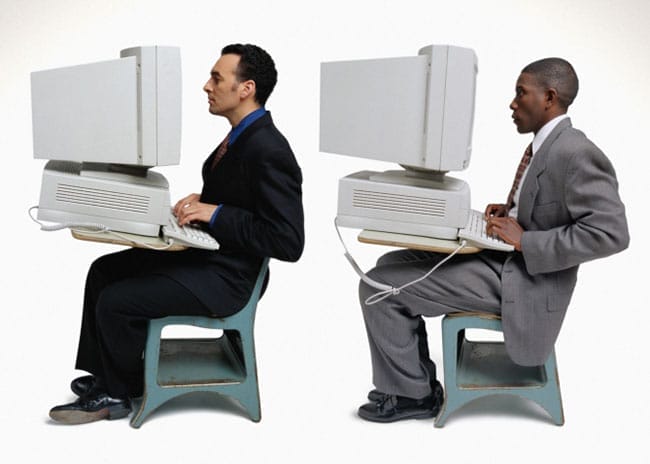The recent acquisition earlier this year of e-learning site Lynda.com for $1.5 billion by LinkedIn—a social networking site for professionals—was eye-opening because of what it signaled: that e-learning is a force to be reckoned with, that content matters when it comes to e-learning, and that LinkedIn is moving beyond professional networking and toward content creation and sharing. But what has gone under the radar is the fact that it signals a more fundamental shift in the way that we view work and education.
The nature of work is rapidly changing. Whereas the traditional worker used to come in at 9 a.m., leave at 5 p.m. and work from a cubicle, new technologies have altered our relationship with work. Nowadays, more workers are telecommuting since digital technologies have made it easier to work from home. We’ve seen the rise of the freelance economy as companies like Elance, Odesk and even Uber allow individuals to work as independent contractors however and whenever they want. This trend is only gaining steam.
Likewise, technologies have emerged that transform the way we think about learning. Companies like Coursera and Udacity make it possible to learn any subject on demand. If you want to take a data science course from Johns Hopkins University or a course on leadership from Case Western Reserve University from the comfort of your own home, you absolutely can.
“E-learning continues to accelerate—the only way Code.org could have had 100 million people try an Hour of Code within 18 months of its inception is by making it available online and fun to learn. Large companies are starting to follow that model,” says Hadi Partovi, founder and CEO of Code.org. If you want to update your skills but really insist on the classroom experience, then companies like General Assembly (co-founded by Jake Schwartz WG08) will provide a 12-week boot camp experience or allow you to take part-time courses in data science, back-end Web development and product management.
What is most interesting about these changes to the work and learning experience —and perhaps the least acknowledged—is the fact that the lines between the two are blurring rapidly. There is now much less of a separation between the antiquated notions of “work” and “school” than ever before.
Zach Sims, CEO of Codecademy, points out, “A large percentage of Codecademy’s students are employed and actually learning to program on the job. We’ve worked with lots of Fortune 500s on helping their employees to learn programming—we’re seeing a shift where learning isn’t just about the classroom, but is instead about learning over the course of a professional career.”
In fact, a recent survey found that 60 percent of all online students are employed full-time.
“I see a lot more convergence coming down the line—students and employees learning job-related skills (like computer programming) online and then using those skills to enhance their career prospects. It’s an exciting time for e-learning and employer-sponsored training,” adds Partovi.
What’s exciting about this is that we’re seeing technology enable continual learning. For example, the company I recently worked for, Cornerstone OnDemand, designs learning management systems (LMS) that companies use to encourage employees to complete training for compliance purposes (e.g., sexual harassment, securities fraud) and allow them to engage in self-initiated trainings on subjects ranging from the use of Microsoft Outlook to database management. Depending on personal goals or career objectives, they are easy to achieve purely by utilizing an employer-sponsored LMS system.
For workers more interested in learning by reading books, there are still a variety of options. Another company—Boopsie—creates mobile apps for libraries to make their electronic databases and resources more accessible for library patrons. The company, with a roster of high-profile commercial library clients from BP to Mary Kay Inc. to Best & Krieger LLP, was able to show that those industry giants can benefit by giving employees—typically scientists and lawyers—on-demand, mobile access to journals and databases they need to do their jobs. For employees who prefer to learn from someone else, another early-stage company—Everwise—facilitates the mentoring process. Everwise, which boasts a client roster that includes Hewlett-Packard, Genentech, Visa, Twitter and Wal-Mart, matches employees with good mentors, curates the process, offers specific modules to assist with particular areas of interest and ensures that the process is mutually beneficial for both parties.
The notion of a career being something where someone goes to school for a number of years and then works until retirement is an antiquated one. Nowadays, we’re seeing workers follow more nontraditional paths during a career. People finish college, work for a couple of years, go back to school, head back to work and maybe take some online courses as they perform their full-time job. Since 2006, there has been a 20 percent increase in the proportion of students taking a gap year during their formal education.
What this highlights is the continual nature of learning and the fluidity between work and school, not only in terms of one’s career but also in terms of the learning-oriented activities employees engage in at work or the work-oriented activities they engage in at school. We’ve begun to see that the learning process looks less like formal education in the same way that work is distancing itself from the rigid, cubicle-based, 9-to-5 job.
This convergence is exciting because it means that people are beginning to recognize that the learning process never ends. There no longer comes a point in someone’s career when someone should say, “OK, I think I’ve learned enough now.” That may partially be a reflection of the fact that the skills one needs in order to be ready for more professional jobs change so frequently that they can’t all be learned in school anyway. Regardless, it’s an ongoing journey and the emergence of various technologies means that “work” and “school” can coexist simultaneously as employees seek new skills that they can apply to their profession.

























